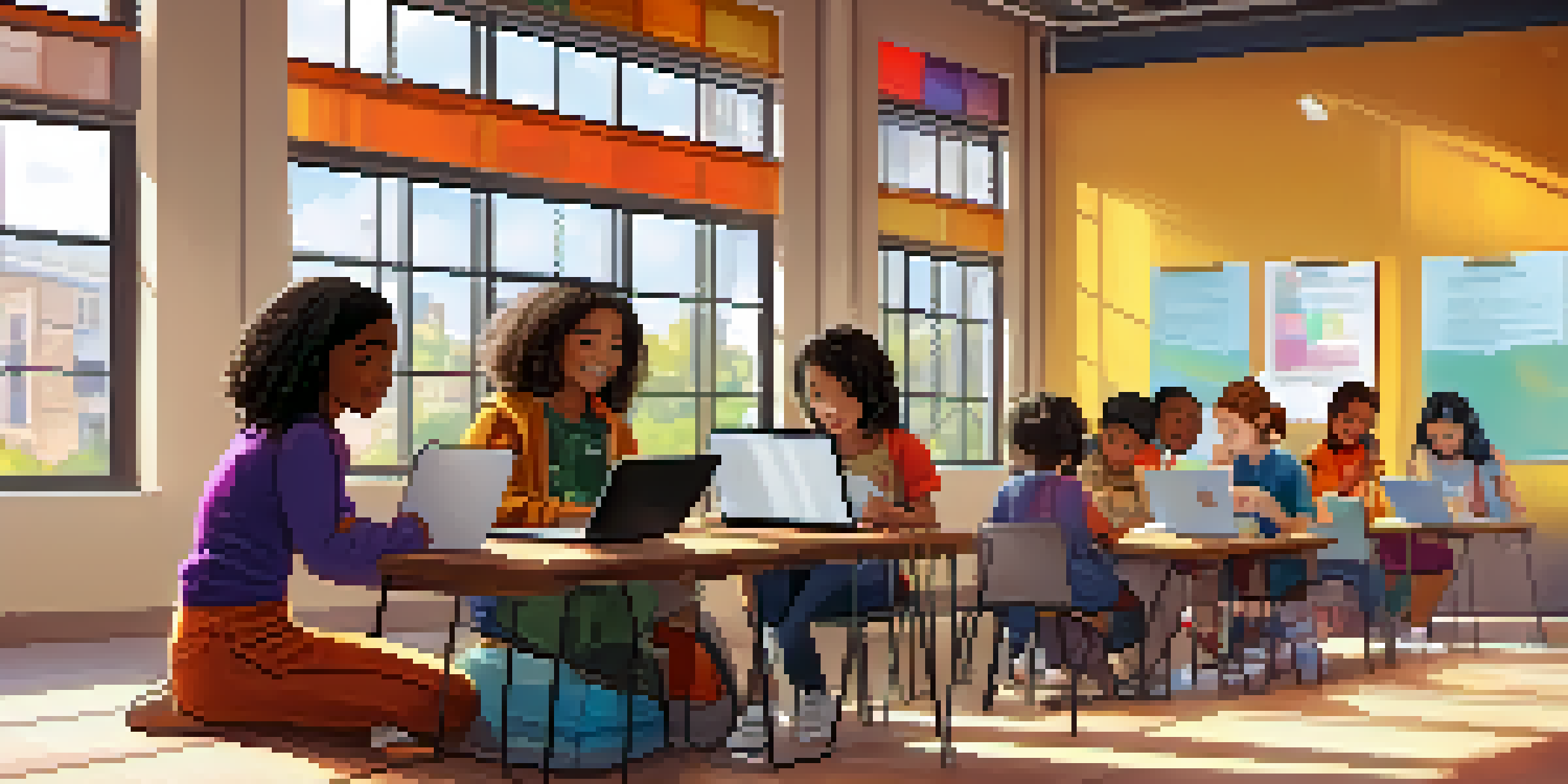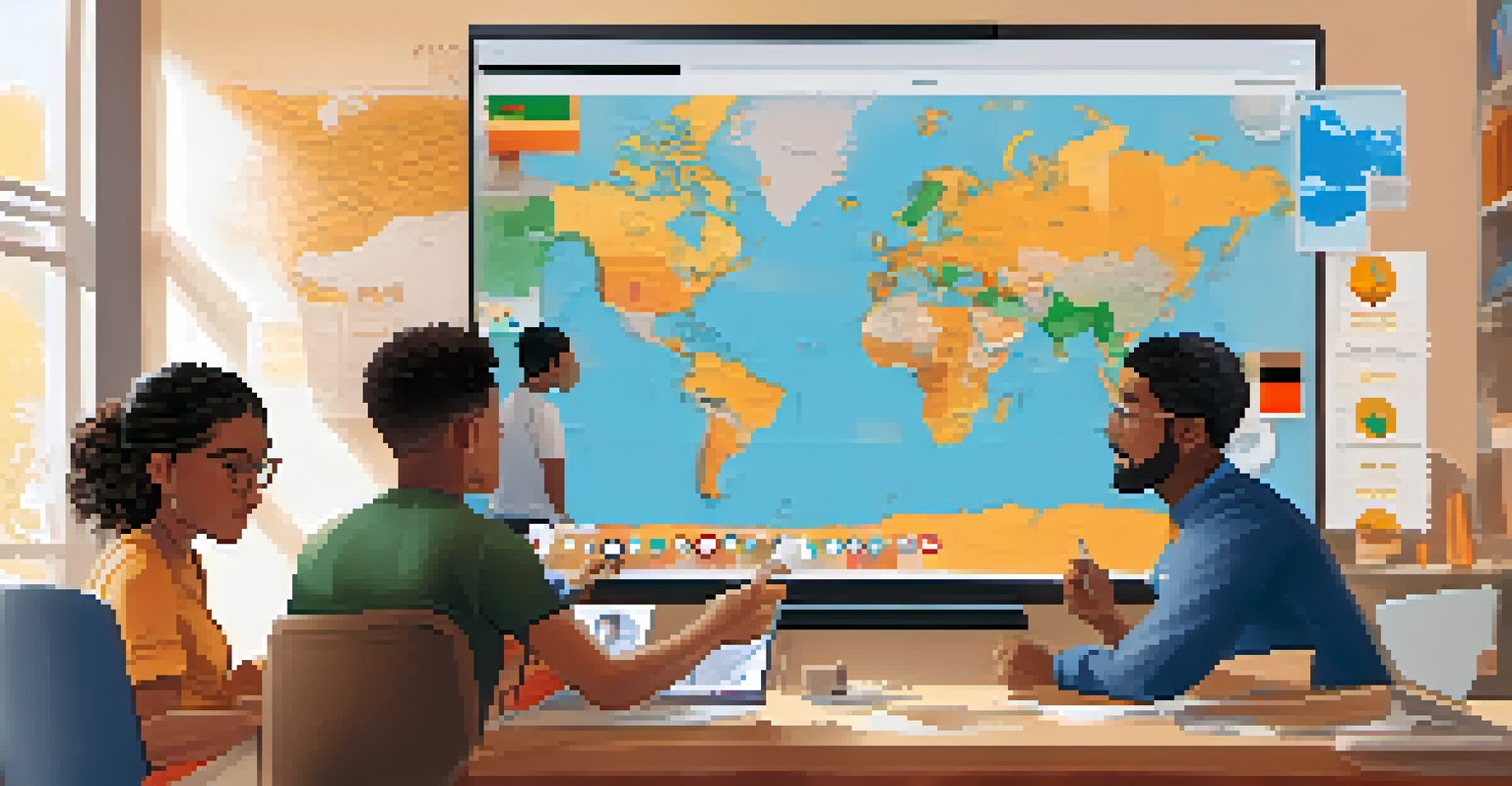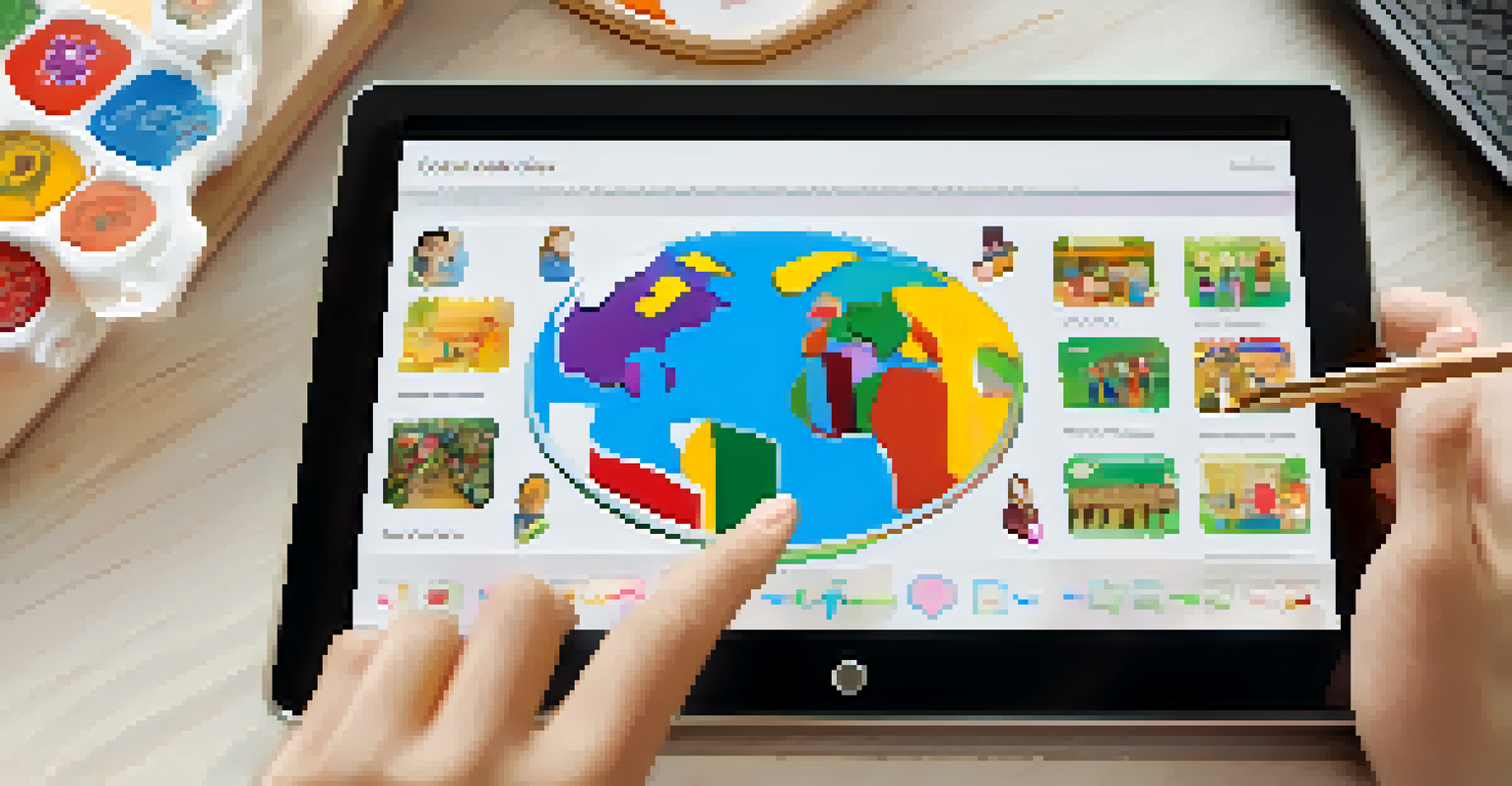Utilizing Technology in Culturally Responsive Teaching

Understanding Culturally Responsive Teaching
Culturally responsive teaching (CRT) is an educational approach that recognizes and honors the diverse cultural backgrounds of students. It aims to create an inclusive environment where all students feel valued and understood. By integrating students' cultural references into the curriculum, teachers can foster a deeper connection to the material.
Teaching is not about filling a bucket, but lighting a fire.
This approach not only improves engagement but also enhances learning outcomes by making education more relevant and relatable. For example, a history lesson that includes perspectives from various cultures can resonate more with students of those backgrounds. Ultimately, CRT seeks to empower students by acknowledging their identities.
In a world that is increasingly interconnected, understanding CRT is essential for educators. It encourages them to be reflective about their teaching practices and consider how they can adapt to meet the varied needs of their students. With technology at our fingertips, we can further amplify the effectiveness of these teaching methods.
The Role of Technology in Culturally Responsive Teaching
Technology acts as a bridge in culturally responsive teaching by providing access to a wealth of resources that reflect diverse perspectives. Digital tools can enhance the curriculum by integrating multimedia content that showcases different cultures, traditions, and histories. For instance, virtual reality experiences can transport students to different parts of the world, allowing them to explore various cultures firsthand.

Additionally, online platforms can facilitate connections between students and communities around the globe. This interaction can promote a deeper understanding of different cultural practices and viewpoints, enriching the educational experience. Teachers can leverage social media, blogs, and discussion forums to engage students in meaningful conversations.
Culturally Responsive Teaching Defined
Culturally responsive teaching (CRT) creates an inclusive environment by integrating students' diverse cultural backgrounds into the curriculum.
Moreover, technology allows for differentiated instruction, which is crucial in a culturally diverse classroom. Educators can use adaptive learning technologies to tailor lessons according to individual student needs, ensuring that everyone has the opportunity to thrive. This personalized approach can significantly enhance student engagement and motivation.
Incorporating Digital Storytelling in the Classroom
Digital storytelling is a powerful tool in culturally responsive teaching that allows students to share their own narratives. By creating multimedia presentations that incorporate images, videos, and audio, students can express their cultural backgrounds and personal experiences. This not only encourages creativity but also fosters a sense of pride and belonging.
The beautiful thing about learning is that no one can take it away from you.
For example, students might create a digital story that highlights their family's traditions or a significant cultural event. Sharing these stories in class can promote empathy and understanding among peers. It encourages students to listen actively and appreciate the richness of each other's backgrounds.
Moreover, digital storytelling can help students develop critical thinking and communication skills. As they craft their narratives, they learn to organize their thoughts and present them effectively. This process not only reinforces their cultural identity but also builds confidence in their abilities as learners.
Utilizing Online Collaborative Tools
Online collaborative tools like Google Docs, Padlet, and Trello can enhance culturally responsive teaching by promoting teamwork and communication among students. These platforms allow students from diverse backgrounds to work together on projects, sharing their unique perspectives and insights. Collaboration fosters a sense of community and encourages students to learn from one another.
For instance, a group project on a cultural topic can lead to rich discussions as students contribute their viewpoints. This collaborative environment can break down barriers and foster mutual respect among classmates. It also enables students to practice essential skills like negotiation and problem-solving.
Technology Enhances Cultural Learning
Technology acts as a bridge in CRT by providing resources that reflect diverse perspectives and facilitating global connections among students.
Furthermore, using collaborative tools prepares students for the global workforce, where teamwork across cultures is increasingly common. By engaging in these online platforms, students learn to navigate digital communication effectively, a crucial skill in today's interconnected world.
Leveraging Educational Apps for Diverse Learning
Educational apps can provide a wealth of resources tailored to the diverse needs of students in a culturally responsive classroom. These apps often incorporate interactive content that reflects various cultural perspectives, making learning more engaging and relevant. For example, language learning apps can introduce students to different languages and cultural practices simultaneously.
Moreover, many educational apps offer personalized learning pathways, allowing students to progress at their own pace. This flexibility is particularly beneficial in multicultural classrooms where students may have varying levels of familiarity with the subject matter. Such tools can help bridge knowledge gaps and promote equity in learning.
Additionally, educational apps can support students with different learning styles, whether they are visual, auditory, or kinesthetic learners. By catering to these varied preferences, teachers can enhance student engagement and ensure that everyone has the opportunity to succeed.
Creating a Culturally Relevant Curriculum with Tech
Technology can play a crucial role in developing a culturally relevant curriculum that reflects the diversity of students’ backgrounds. By utilizing online resources, educators can curate content that includes diverse voices and perspectives. This not only enriches the curriculum but also validates students' experiences and identities.
For example, incorporating literature from authors of different cultural backgrounds can enhance students' understanding of various viewpoints. Technology allows teachers to easily access a wide range of materials that might not be available in traditional textbooks. This flexibility enables educators to create a more inclusive learning environment.
Digital Storytelling Fosters Identity
Digital storytelling allows students to share their narratives, promoting empathy and understanding while reinforcing their cultural identities.
Additionally, technology can facilitate ongoing curriculum adjustments based on student feedback and evolving cultural contexts. By using analytics tools, teachers can assess how effectively the curriculum resonates with their students and make necessary modifications. This adaptability is essential in ensuring that education remains relevant and engaging.
Assessing Cultural Responsiveness Through Technology
Assessment is a vital part of culturally responsive teaching, and technology can enhance this process. Digital assessment tools allow educators to gather feedback on students’ cultural understanding and engagement. For example, online surveys can help teachers gauge students' perceptions of inclusivity in the classroom.
Moreover, technology enables formative assessments that provide real-time insights into student progress. Educators can use platforms that track student performance and engagement levels, allowing for timely interventions. This data-driven approach ensures that instruction remains responsive to students’ needs.

Additionally, leveraging technology for assessment can promote student reflection and self-evaluation. Students can use digital portfolios to showcase their work and document their learning journey. This not only empowers students but also encourages them to take ownership of their education.